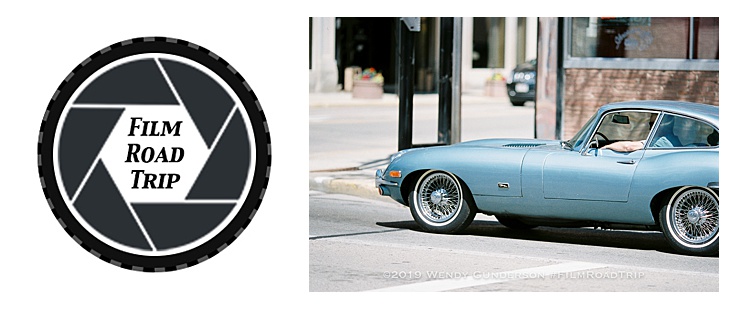I love shooting film, in part, because of the thrill of seeing what you captured. Unlike digital, where you have immediate feedback, you never quite know what you’ve got until you either develop your film or receive it back from your lab. With double exposures, the excitement is that much better. It’s not just a matter of what you have captured, but how you lined up the two exposures to reveal an entirely new composition. Here’s a super quick step-by-step guide on how I shoot double exposures on film.

When you think about a double exposure on film, you have to know the basics of how exposure works. When you take the first shot, the areas which are white or very light are fully exposed. You will not be able to see anything in this area in the second exposure because essentially the film is spent in those areas. The are fully exposed and the film has nothing more to give. What is darker in your first exposure still has potential. When you make that second exposure, what was dark in the first exposure will be where the second exposure will materialize.

Exposure #1
For my first exposure, I look for high contrast subjects. You can shoot a skyline against a bright sky, a person’s profile against a white or light-colored background, or a dark shadow surrounded by bright sunlight. What is white or light in color will be washed out. What is darker in the image is your canvas for your second exposure. It’s not necessary to have an object in silhouette or high contrast, but I like this look. Double exposures can also be effective without a silhouette, but the final product will have more of each exposure retained. When you make the first exposure you have to keep in mind what is fully exposed and what is left for your second exposure.

Exposure #2
For your second exposure, you are looking to fill those dark spaces from your first exposure. Anything white or light in the second exposure will likely be blown out in the final image. The challenge is placing the second exposure when the first exposure is only in your memory.

What settings should I use?
Depending upon the sensitivity and latitude of your film, you may have to make adjustments to your exposures to make sure that your final image appears as you like. With slide film, the exposure latitude is pretty tight, so consider underexposing so that the final image is not completely blown out. I would suggest doubling your speed or stopping down a full stop for each exposure. I have had success with shooting at box speed with most of the color negative film stocks used, but it takes some experimentation and the need to make adjustments will vary depending upon the circumstances and what you desire in the final image.

I should point out that although commonly called “double exposures,” a more accurate name is “multiple exposures.” You are not limited to two exposures on each frame, although you should keep in mind that the more you shoot on a single frame, the more potential for overexposure and losing details.

Are all film cameras capable of double exposures?
No, although some which don’t have the feature have some workarounds to allow for double exposures. For example, my Canon EOS 1v is very easy when it comes to doing double exposures. You open the side door, push the multiple exposure button (it looks like two photos stacked upon one another), rotate the camera’s dial to the number exposures desired, and start shooting. It automatically resets to normal shooting mode when the multiple exposure is complete.

On my Mamiya 645 Pro TL, there is a switch on the side of the camera which has two positions. Switch the camera from the unlabeled normal position (the white box) to “MULTI.” In this position, the film will not advance, but the shutter will be recocked, allowing for multiple exposures. You have to manually return the switch to the normal position and advance the film to exit the multiple exposure mode.

With my Canon AE-1 Program, it was not designed to offer double exposures as a feature, but I have been able to create a workaround. After you shoot the first exposure, press and hold in the rewind button on the bottom, and move the advance lever forward, but don’t release it. Then release the rewind button and allow the advance lever to return to its normal position. Then fire the second exposure and advance normally.

I haven’t found a workaround for my Mamiya 6, so if anyone has any ideas, I would be glad to give it a try!

I’ve had failures as often as successes, but I find double exposures to be loads of fun and I will continue to try them in the future. Give it a chance and you’ll be hooked!
If you love film photography, take a look at our sister site, Film Road Trip, devoted to film photography and travel.

